Starting to Happen
One of my favourite things is to surf YouTube, hunting for interesting old footage of London street scenes. Yesterday I was looking for footage of the South Circular, having discovered that there used to be an extra mini-gyratory opposite St Dunstan’s College in Catford.
I did not find that. But I found something… fascinating. A film called Starting to Happen. I’ll summarise the film (which you can watch in full at the London Community Video Archive), and then make a few comments.
Synopsis
Starting to Happen is a film shown on the BBC in 1974 made from footage shot in Balham, London. The introduction explains the approach:
It is June 1973. We in Liberation Films are a team of seven people. Our experience has been that a community film show can bring people together, attracting those who wouldn’t usually attend a meeting on community affairs and stimulate them to decide what should happen in their area. As a development of these ideas we wanted to see to what extent local people could use portable video to make their own video show and later present it in their own community.
The project aimed to pick up on what local people want, and then by means of feedback build a project. This means it is as much a documentary about a documentary process, as a documentary. Initially a series of films were shown to provoke discussion, finishing with a roughly edited set of Vox pops from a meeting at a jumble sale at an adventure playground the previous weekend.
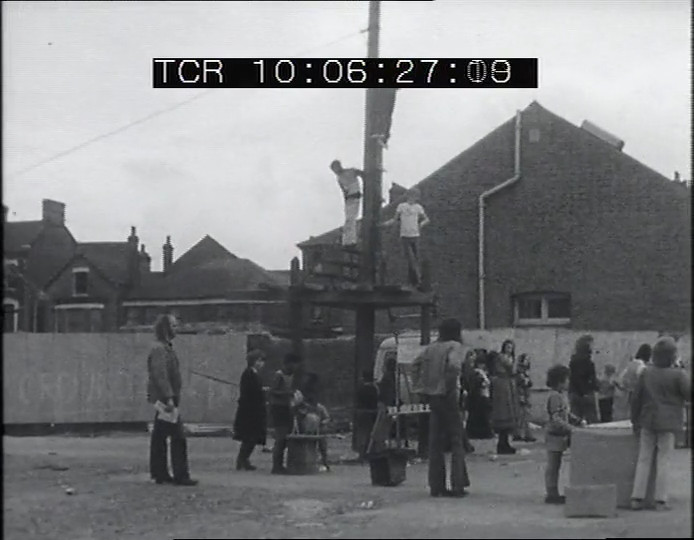
About ten minutes into the film, one woman talks about the need for a zebra crossing in nearby Bedford Hill. Residents had asked the council for a crossing 18 months ago and were told there was not enough traffic to need one. At this time, remember, traffic was rising rapidly across the UK and in London. The council’s solution was seemingly to come back 18 months later when traffic was bad enough.
At one community discussion the issue of the lack of a safe crossing is discussed, as are other issues in the area such as the conflict locally with kerb crawlers – indeed there is a short discussion on the merits of legalising sex work. But after the discussion and the viewing of the film of that discussion (Liberation Films loved using film for interaction!) they decide to focus on two issues – refuse problems, and a community centre.
So the film crew go off and get Vox-pops from people in the street. But after a bit of casual racism and reminiscing for shops you could eat a meal in, the narration cuts back in.
On this day an unscheduled event diverted the attention of the video team. A child was knocked down, injured on Bedford Hill.
One woman at the protest says she had written three petitions [for a crossing] in the past six years but nothing has happened. “It’s just more kids getting run over”. The women and children decide enough is enough, then sit down and stage a protest.

An agreement was reached to repeat the protest every Tuesday, and the protest, with numbers having grown during its blockade of side streets marched down into Balham where Bedford Hill meets Balham High Street.

It is at this point (21 minutes in) that the film meets its true star – Madge, who is described as a housewife and mother living on Bedford Hill. She organised with the police for them to redirect traffic away from the protest to let it function, and is insistent that change will only come from causing the powers that be a lot of aggravation.
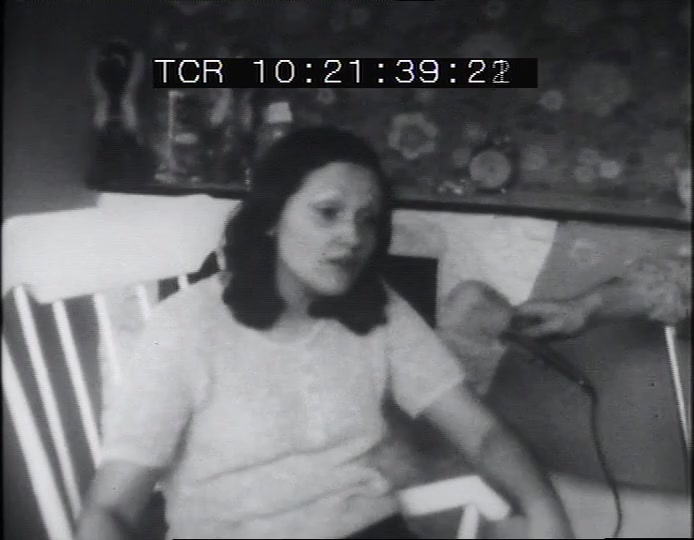
After some editing, film of the zebra crossing protest along with the other two issues selected is prepared to be shown to the community. A somewhat laborious but purposeful approach to use feedback to build the outcome. Footage is then shown of Madge agreeing the diversion with the police at the first protest, and organising people to filter the streets.

Madge gets her star turn relating a council officer saying they can’t afford a zebra crossing – “I said we don’t need a gold one. We just want black and white with two Belisha beacons.”
The community then discuss the films, and have further comment on the issues of safety for children in navigating the local streets. In theory that was to be the end of the project, but the weekly protests were too interesting so they filmed the next one as well.
Madge is now directing a growing group of children.

There are more placards

And cars being blocked on the main road are then sent back
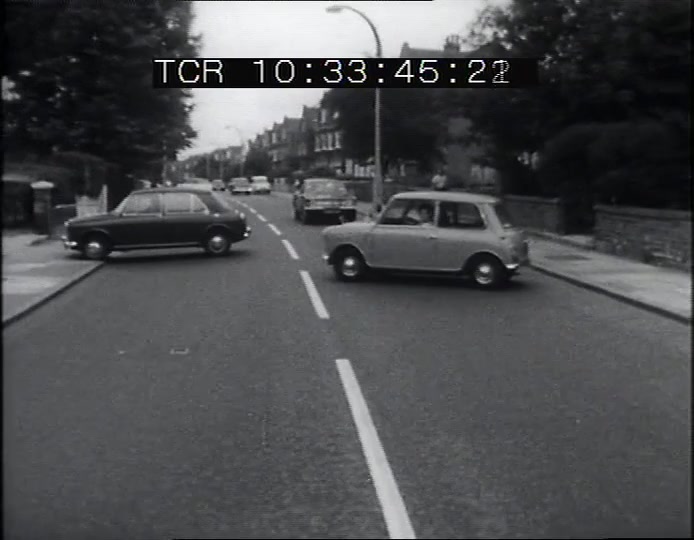
One man in a (white?) van gets fed up and actually tries to drive through these children. The parents are naturally outraged, but the police seem to be on the drivers side.
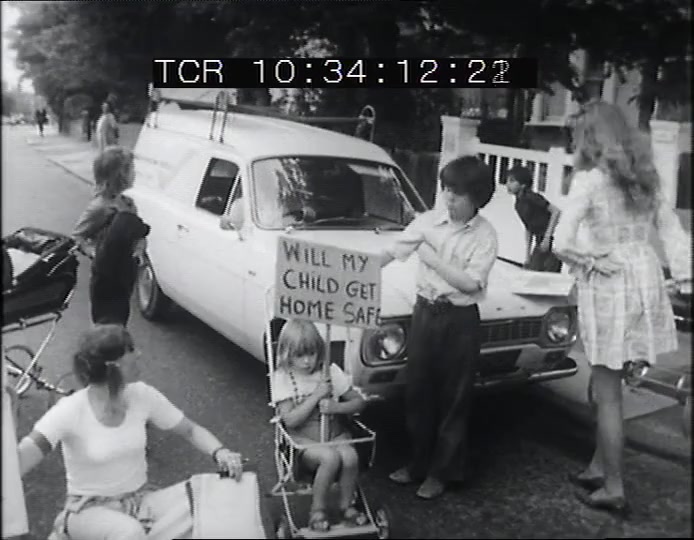
Meanwhile Madge is talking to a local councillor who is insistent a crossing will only be built if the traffic and pedestrian counts merit it.
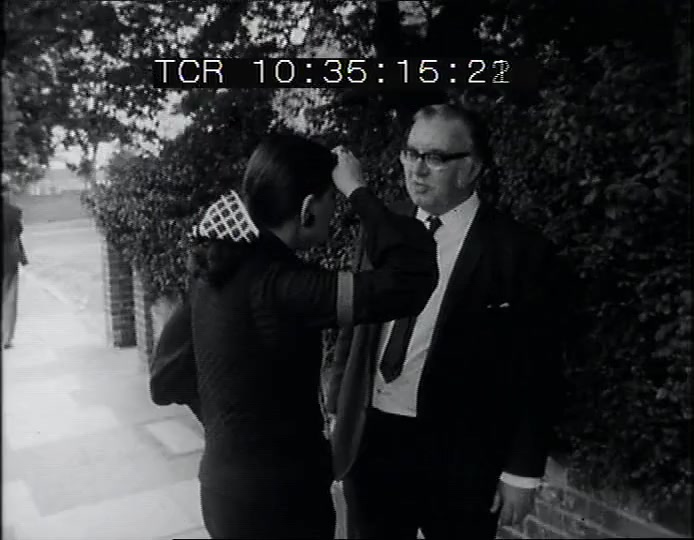
The march this time goes up the hill to Tooting Bec Common. There is then a vibrant and hearty discussion, watched by the police. You can sense that the protest movement is starting to fray.

The film-maker Roger Buck does a simple ask of the crowd if they were wrong to march up the hill, and gets a resounding demand to go down the hill to Balham High Street next time.
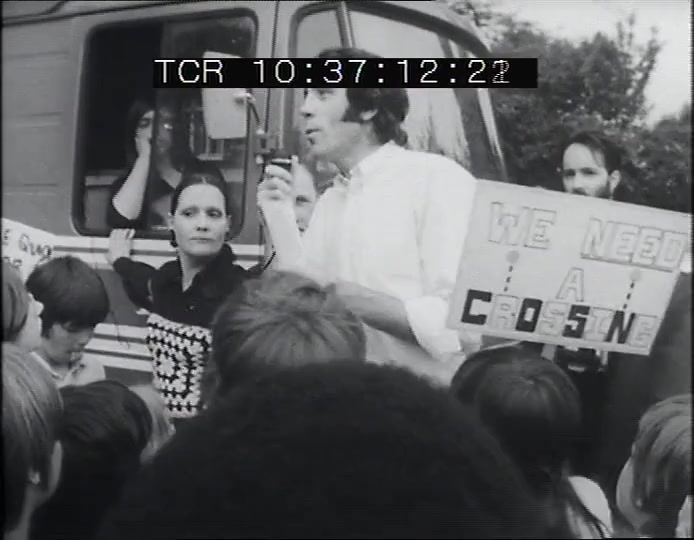
Roger sums it up that there are two camps – those who want to cooperate with the authorities, or those who feel unless they push for change. He also says it was wrong for Madge to have agreed with the police to take the march up to the Common. Roger then tries to lead people down to the High Street without police assistance just marching agains the traffic, but Madge is fed up at her plan being thwarted. To avoid disunity they disperse.
Roger is then cautioned by the police for a possible offence of conspiracy to block the highway.
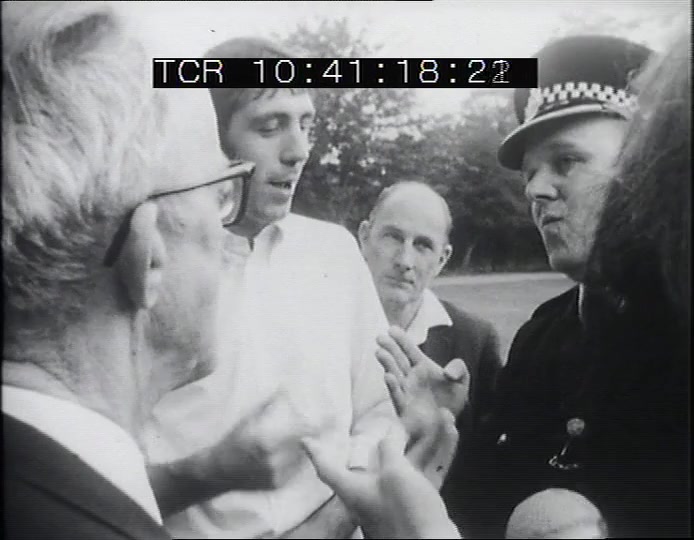
The film ends with a simple voiceover.
There is now a firm promise from the authorities for a pedestrian crossing.

And, well, at least by the 2000s, there was a signalled crossing. It may well have been a zebra long before. There are also a series of informal crossing points further up the hill.
There is a brief discussion at the end, with participants at the end feeling that the films, and the fact of making a film in Balham contributed hugely to the effect of the community work. The process used is documented in more detail in the section on Liberation Films in the 1975 book, Community Media.
Comments
This is a really weird fragment of history. I’m utterly delighted by it, as it shows in many ways that the mood outside of the UK in the early 1970s – particularly that seen enviously in the Netherlands of the Stop de Kindermood movement or pushes to remove cars from De Pijp in Amsterdam was not uncommon. The problem perhaps was organisation, the way our politics marginalises minority voices, and even the way that police criminalised protest, as seen here – but examining all of that is a whole other project.
What we can say is that the radicals of Balham in the 1970s were keen to see their community have space to relax, to play, to meet. They wanted children to have the independent right to navigate the streets they lived in safety. In the long run children die less often on streets in the UK, but partly this is because children are now more restricted in their independent movement.
Right now the need to be safe walking and cycling locally is strong than ever – both in the face of the medium term changes from the pandemic and the longer term threat from climate change. In that context I find this image of Balham High Street now covered in tables and chairs rather welcome – it is possible that radical changes may yet get us to where people wanted to get, even fifty years ago.
Liberation Films had a few projects like this. Another one I rather enjoyed was All You Need’s An Excuse – which shows families in North London acting to find safe space for children to play. You can see the roots of approaches to build new nature reserves, adventure playgrounds and some of the early push to improve the urban realm with paint.
I think we would do well to remember that often some of the most mundane bits of infrastructure in our streets involved pretty hearty protest. And that it wasn’t just the loudest or largest campaigns that brought it.
Now set down on the sofa and watch it all.


